As Light Pollution Spreads, National Parks Become Stargazing Sanctuaries
On a crisp September night, the rocky coastline around Sand Beach in Acadia National Park feels like the edge of the world. A rapt audience is gathered in the darkness, huddled together on blankets for one of the park’s most popular ranger-led programs: “Stars Over Sand Beach.” The Milky Way arcs high overhead, spilling stars in every direction in a sparkling spectrum of color — white, yellow, orange, and blue — and the dome of the sky is inky black.
The only artificial light comes from the occasional sweep of a flashlight and the faint glow on the horizon from the town of Bar Harbor just a few miles north. With a green laser, a park ranger points out constellations to the crowd: the W-shaped Cassiopeia, the bright star Arcturus in the Boötes constellation, and the cluster stars of the Pleiades.
More than 175 miles away from Sand Beach by car is downtown Portland, Maine. There, like in most urban centers, the muddy bluish-gray or orange glow of the night sky comes not from distant stars, but from light pollution — artificial light that blazes throughout the night on streets, sidewalks, basketball courts, and shopping centers.
In 2017, a multinational research team found that the Earth had gotten brighter at a rate of about 2 percent each year between 2012 and 2016. Increasingly, denizens of the developed world do not know what Paul Bogard, author of “The End of Night: Searching for Natural Darkness in an Age of Artificial Light,” calls “a wild sky” — the brilliant stars seen over Zion National Park in Utah, or Assateague Island National Seashore in Maryland and Virginia, or Death Valley, California. In addition to obscuring an essential aspect of the natural world, light pollution has been shown to disrupt normal sleep-wake cycles in humans and animals alike and to disorient wildlife in detrimental ways.
To raise awareness about light pollution and create support for conserving natural darkness, public land managers are relying on the growing popularity of astronomy tourism — or “astrotourism” for short. Astrotourism, a term once used to describe tourism in space that now encompasses night sky viewing, is on the rise. The International Dark-Sky Association (IDA) reports that the number of worldwide parks applying to be on the list of certified “International Dark Sky Places” is five times higher than it was eight years ago — with 15 to 20 parks applying for the certification per year now versus just three or four in 2010 and 2011.
In 2017, Condé Nast Traveler declared astrotourism “now a thing,” and a joint University of Michigan/NASA study posited that some 215 million Americans watched that year’s total solar eclipse, nearly double the number who had watched the 2017 Super Bowl.
“There’s a growing awareness of light pollution and of environmental issues in general,” says John Barentine, IDA’s director of public policy. “Some of this is a reaction to our increasingly frenetic existence and how we’re tied to our devices and feel increasingly disconnected from nature.”
As stewards of some of the wildest natural areas remaining in the country, the U.S. National Park Service (NPS) has taken a leading role in promoting the value of the night skies. This is despite the fact that the federal government, which oversees the NPS, has never mandated protection for night skies like it has for water and other natural resources. This contributes to the land managers’ key challenges: limited budgets, a nearly $11 billion maintenance backlog, increased visitation, and development that is pushing ever closer to park boundaries, threatening them with encroaching light pollution.
As a rare bastion of natural darkness on the East Coast, but one whose popularity is booming, Acadia National Park is wrestling with these same issues and offers a good example of what the national parks are doing to preserve their dark nights.
Light pollution has been a fruitful field of study for researchers in recent years, one that the Loss of the Night Network (LoNNe), a multi-national research consortium based in Berlin, Germany, says is growing. In 2015, LoNNe and IDA began tallying relevant journal articles in their Artificial Light at Night (ALAN) research database.
Today, the database has more than 900 published research papers about worldwide light pollution and its impacts on all creatures, including humans. In 2016, for example, the American Medical Association reported that blue-toned LED street lighting was five times more disruptive to the internal biological clock that governs our sleep-wake cycles — our circadian rhythms — than conventional street lighting.
Disrupting the natural light-dark cycle can also have devastating effects on animals that are nocturnal and crepuscular (active in twilight), which rely on the dark for their most essential activities: hunting, eating, and mating. In a study published in early 2018, researchers at the University of South Florida found that house sparrows infected by West Nile virus remained infectious longer when they were exposed to artificial lighting. In 2014, the Florida Fish and Wildlife Research Institute issued a report describing how artificial light can disorient turtle species, citing an incident that year in which a car at Gulf Islands National Seashore hit and killed a female loggerhead turtle that was moving towards land-based lights. And in a paper published in 2016, which examined the lighting of under-road wildlife passageways, researchers from Portland State University found that artificial light prevented deer mice, Columbia black-tailed deer, and opossums from crossing.
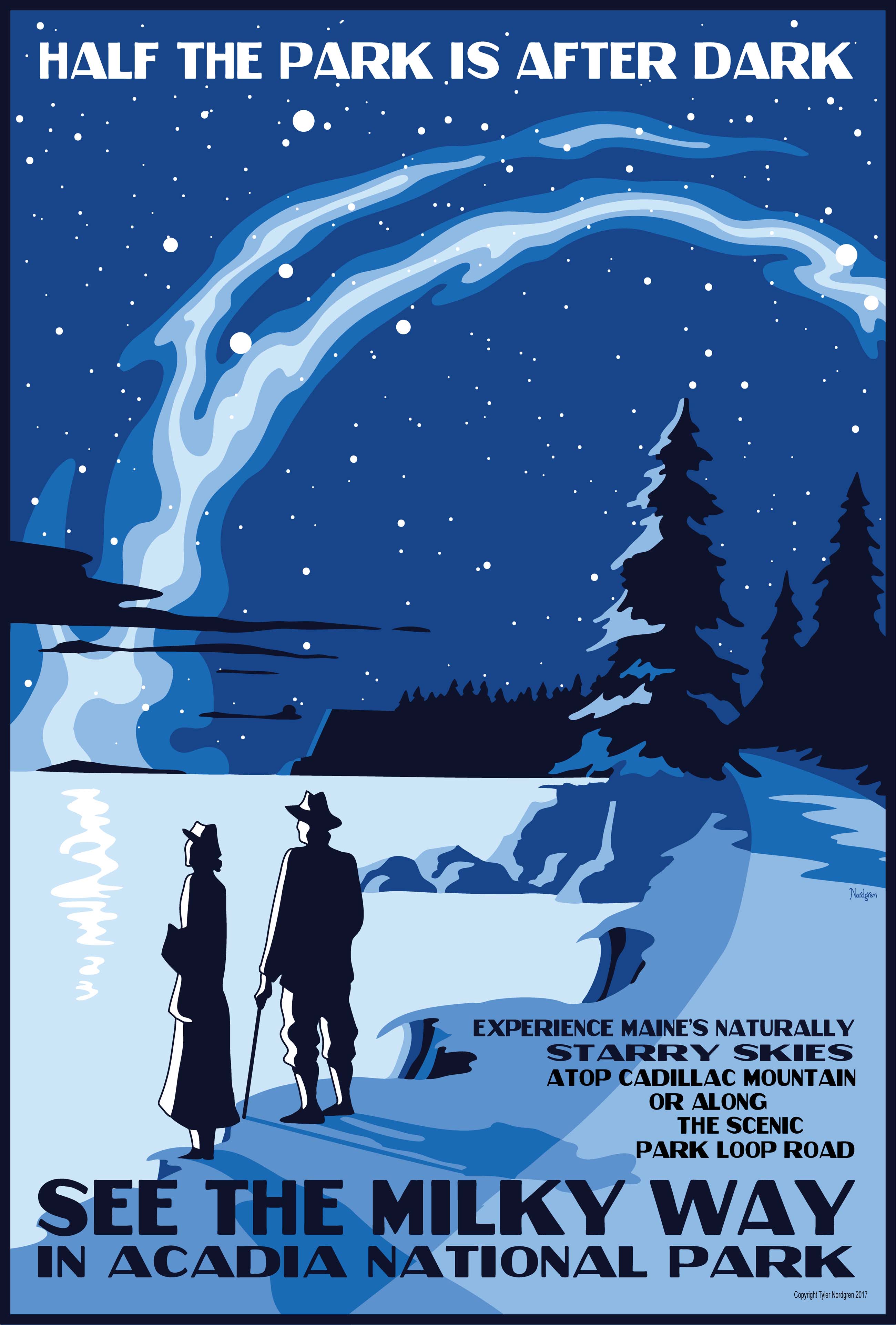
Because of such threats, since 1999 the National Park Service’s Night Skies Team — now the Natural Sounds and Night Skies Division — has been monitoring the quality of darkness in the national parks. “In recent years, we also have begun addressing not just the condition of the resource, but also addressing major threats — in this case, light pollution,” says Karen Treviño, chief of the division.
In 2006, the NPS issued a management policy document that included a section on lightscape management, which stated in part that the Service will preserve “the natural resources and values that exist in the absence of human-caused light.” Techniques include restricting the use of artificial light except where it’s needed most for human safety, using minimal-impact lighting such as lamps that shine only downward or that can be dimmed when not in use, and shielding artificial light from dark-dependent habitats, such as caves. And Treviño estimates that up to 100 parks now have some form of astronomy-based evening program, with more in development. Her team also routinely holds training programs that will help park managers, interpreters, and rangers to make good lighting choices and also sell their value to the public.
One of the Park Service’s partners in this effort is Tyler Nordgren, an astronomer, physics professor, and author of the book “Stars Above, Earth Below: A Guide to Astronomy in the National Parks.” Nordgren is also an artist in high demand, the creator of a popular series of posters that celebrate the night sky in the national parks. Cast in a range of blue tones, Nordgren’s posters depict a particular park’s key features against the backdrop of the Milky Way. (His Acadia poster shows tall pine trees along a rocky coast.) The images include the slogan, “Half the Park is After Dark,” a phrase that came to Nordgren after he spent some time alone under the wild sky at Yosemite National Park.
Nordgren reports that in the last few years, he has seen a 50 percent annual growth in the number of his posters sold in national park gift shops. “What this is showing me is that the night sky is capturing the public’s interest,” he says, adding that the night sky programs like Acadia’s “Stars Over Sand Beach” are the most popular evening activities in the parks. “The sky, the stars, darkness — they all impact our lives, but we’ve done a really good job of ignoring them,” he adds. “That’s hopefully changing. These programs are a way of turning us back towards nature, and the parks are the place to do it.”
IDA has also promoted the value of night skies to the general public through its International Dark Sky Place designations. This is a rigorous certification process for communities, parks, reserves, sanctuaries, and even certain urban areas that requires that they demonstrate, among other criteria, the existence of natural darkness and observable celestial phenomena, a commitment to public education about the value of natural darkness, a lightscape management plan and, perhaps most importantly, an annual review process to ensure that the darkness hasn’t degraded.
Since the program began in 2001, about 60 International Dark Sky Parks have been certified worldwide, including Bassegoda Park in Spain, Eifel National Park in Germany, Iriomote-Ishigaki National Park in Japan, and Warrumbungle National Park in Australia. U.S. national parks on the list include Big Bend in Texas, Canyonlands and Capitol Reef in Utah, Grand Canyon in Arizona, Joshua Tree in California, and Obed Wild and Scenic River in Tennessee, and more parks are applying for designation all the time.
Despite these certification trends, most other parks, including Acadia, aren’t able to go through the requirements for the label, mostly due to a lack of funding, staffing, and a legislative mandate to conserve darkness. Although Acadia has some of the qualifying elements for Dark Sky Park designation, it hasn’t yet completed the application and met all the criteria.
“One thing that hinders the progress of protecting dark skies is that the Congress has never identified it as a conservation priority, like they did with the Clean Air Act and the Clean Water Act,” says IDA’s Barentine. “I give the Park Service tremendous credit for encouraging the pursuit of natural darkness when they’re not required to do so. What we try to do is smooth the path in front of them as much as possible, to make it more achievable.”
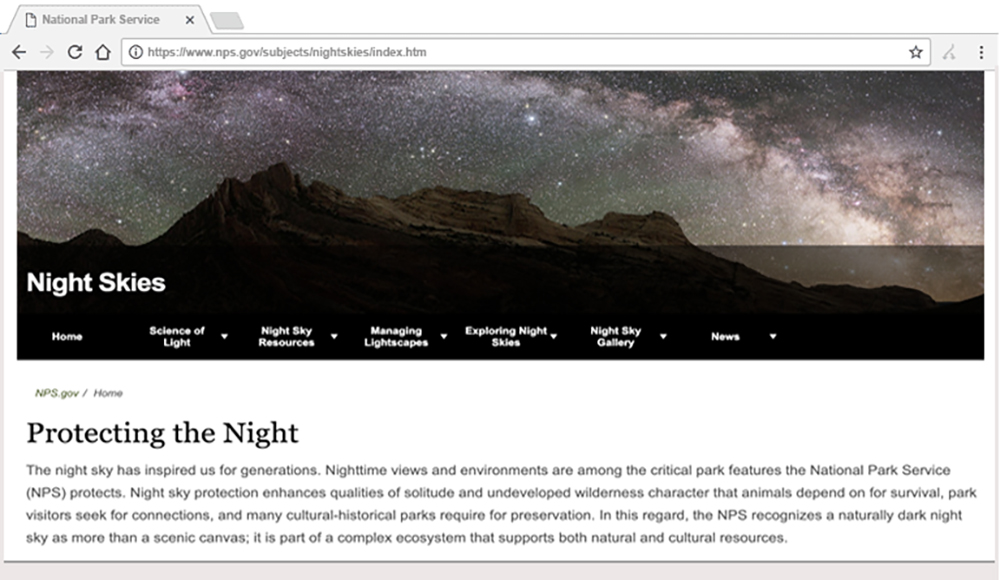
Even without the IDA certification, Acadia has been a forerunner in astrotourism and night sky preservation. Most of the park is on Mount Desert Island, with smaller slices on the Schoodic Peninsula and Isle au Haut, a rustic island accessible only by boat. Although Acadia is within fairly easy reach of visitors from Boston, New York, and other points south, its location along the rocky coast of central Maine has largely protected it from the worst light pollution that plagues the rest of the Eastern Seaboard. Yet even in this place where the Milky Way is so readily visible, it’s important to stay abreast of light encroachment, says John Kelly, the park’s management assistant.
In the last decade, the park has partnered with researchers at the Park Service’s Night Skies team, the College of the Atlantic, and the Worcester Polytechnic Institute to track and map light pollution levels in the park, Kelly says. Yet such efforts have been inconsistent and depend on the availability of researchers or funding, which is hard to come by when the park has a nearly $60 million maintenance backlog. At the same time, the park faces a mounting challenge in remaining a dark park as more tourists pour in. In 2017 alone, Acadia had about 3.5 million visitors, up from 2.2 million only 10 years earlier.
More tourists mean more glare coming from vehicles, safety lighting, and accommodations. Because of this, promoting astrotourism is necessary both to combat the lighting pressure that comes with more people and to build a broader constituency for dark-sky policies and programs. In 2009, the park began its annual Night Sky Festival, a celebration of its dark skies that includes lectures, performances, and “star parties” in iconic locations such as the summit of Acadia’s Cadillac Mountain. Held over a long weekend in September or October, the festival was designed to extend the summer tourist season as a boon to local businesses, while promoting the need to protect natural darkness, says Michael Marion, a longtime interpretive park ranger at Acadia.
“We make it very clear that our event is not an astronomy festival,” Marion says. “It’s a night sky festival.” The festival is not just about a scientific understanding of the stars, he explains, but also a celebration, through art and storytelling, of the beauty and mystery of the night sky and the role we all play in protecting it. Over its first decade, the festival has grown its attendance from less than 2,000 visitors in its first year to 5,122 in 2018.
The popularity of astrotourism in Acadia paved the way for the park to work with officials in Bar Harbor — the largest town on Mount Desert Island — to craft an ordinance that directs landowners to make energy-efficient and nature-friendly lighting choices, Kelly says, including guidance on the strategic placement, shielding, and tone of outdoor lighting. Since Bar Harbor adopted its ordinance in 2009, two other nearby towns, Mount Desert and Ellsworth, have codified similar dark sky policies.
As an example of how easy such changes can be, during an October meeting about light pollution Marion pulled out a nest of LED rope lights that would be used to light walkways at Katahdin Woods and Waters, a newly designated national monument farther north in Maine’s interior for which Marion was offering some assistance in their own dark-sky programming. Instead of the blue light commonly associated with LEDs, these lighting strips glowed red, reflecting scientific research that has shown that warm-spectrum lighting is far less disruptive to nocturnal wildlife and our own internal rhythms.
At Acadia, true night still reigns. After the “Stars Over Sand Beach” program, their eyes thoroughly adjusted to the darkness, people walked up the short trail to the parking lot on a night lit by thousands of stars. Some looked up one last time before opening their car doors. Then, the spell was broken. Car headlights turned on in succession, slicing through the night one by one as they left the parking lot, heading back into the brightness of their daily lives.
Kim O’Connell writes about science, history, and other topics for a range of publications including The New York Times, The Washington Post, Huffington Post, Ladies Home Journal, National Parks Traveler, Landscape Architecture, Preservation, and more. She has served as an artist-in-residence at Acadia and Shenandoah national parks, and she teaches in the Johns Hopkins University Master’s in Science Writing program.


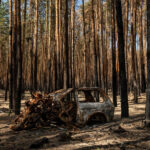



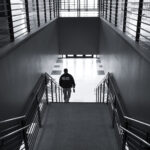
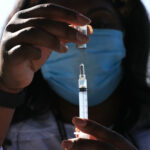
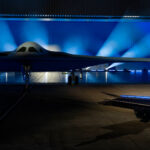
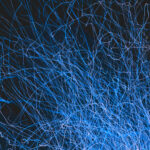
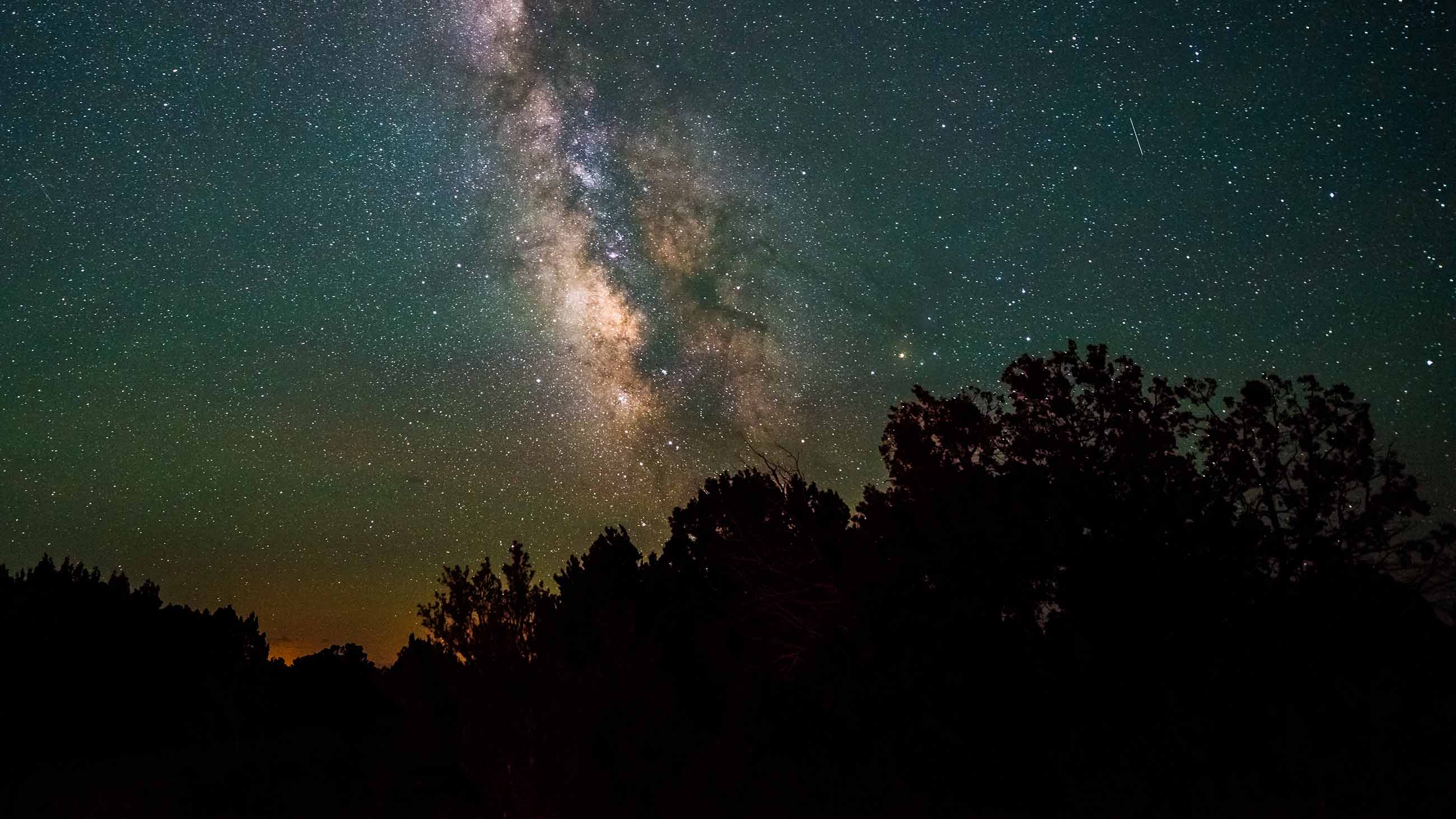
Comments are automatically closed one year after article publication. Archived comments are below.
Interesting comment. Studies by the dark sky advocates show that more light is not necessarily better at deterring crime. The prevailing philosophy of ‘more is better ‘ results in glaringly bright lights that provide dark spots and hinder, rather than help visibility.
It used to be argued that using less light more strategically was an overall cost savings, but as LED lighting becomes wide-spread, and bright lights are available at much lower power, the problem will worsen. People and businesses will replace their expensive halogen based lighting with cheaper, more efficient, but no less invasive LED lights and think they are ‘fixing’ the problem.
Interesting article, I’m surprised there was no mention of Chaco Culture National Historical Park in New Mexico. They had an astronomer on staff back in 2001 and are known for their dark skies
Very nice article, Kim! I do love to see the Milky Way, and the health effects on wildlife were interesting new wrinkles on this topic.
My residence’s sky, being in a highly light-polluted section of the Eastern seaboard, on rare occasions (say, twice yearly or so) inexplicably darkens to nearly a countryside shade. Are businesses shutting down? Did an agreement pass for light pollution to be dampened down on several nights? If so, I’m unaware and if it exists there seems no mention in the local press.
And why should there not be such an agreement? Who can prove crime must increase in the absence of bright glare? I would guess that businessmen believe lights only help criminals better to see whatever their goal is. Not true. Somewhere, a study must exist detailing this exact question.
On those nights, of course I happily grab a giant binocular and settle in for the sort of magical night astronomy will provide. More than worth the wait, since a good sky takes about a 100-mile round trip!
Various studies do exist regarding the fallacy that light deters crime. One in Chicago determined that lit alleyways actually increase crime as it is easier to navigate and look into peoples cars. Watch my TEDx talk “Embracing Darkness” that reveals the consequences of making light going back to the 18th century and our superstitious fear of the dark
Well said!
One of the greatest modern environmental disasters has been perpetrated upon an unaware public – all in the name of “going green” with more “energy efficient” bluish white LED streetlighting that is replacing the amber hued high-pressure sodium streetlights all over the USA. Because the LEDs cost less to oprate, city engineers figure, “Since they’re cheaper to operate, we can increase brightness and still save money!” What that means for cities like Seattle is that urban commercial thoroughfares, as well as sleepy residential neighborhood streets, are now brightly lit up like soccer stadiums, used car lots, and prison yards.
The unfocused glare from the LEDs is blinding to drivers. Worse, the “light bounce” off damp pavements has all but completely blocked out the night sky to where stars are now often invisible. The detriment to the health of humans and wildlife is well-documented, but no one seems to care.